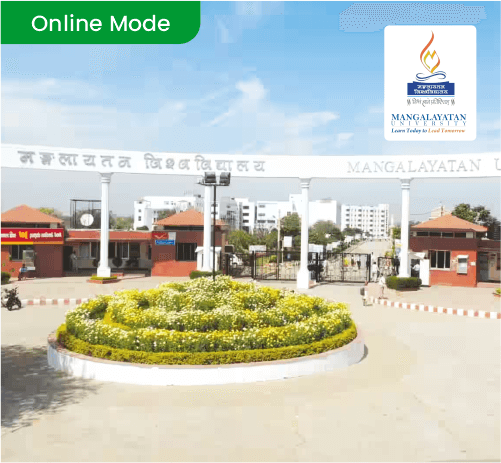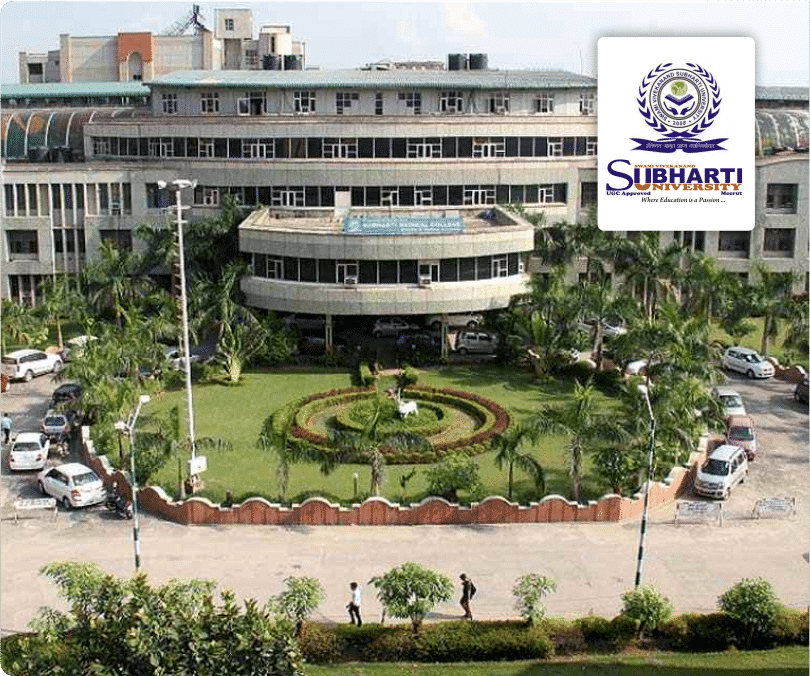
How to score top marks in CAT: MBA Admission Details, Eligibility, Tips and more
Qualifying Common Admission Test (CAT) is a high step forward for students seeking an MBA degree in India. Many prestigious business schools consider CAT marks for admissions. That is why Scoring top marks in this highly competitive exam sets the foundation for a successful career in the business world.
Students must know the importance of the CAT exam for an MBA. This includes eligibility criteria, exam structure, and strategic preparation tips. The exam is held once a year, starting with registration in August.
The time is near, and it is your duty to act. This comprehensive guide will provide all the necessary details about MBA admissions, eligibility requirements, and practical tips for excelling in the CAT exam. Let us first understand what a Common Admission Test is, the exam pattern, and its significance.
What is CAT (Common Admission Test)?
The Common Admission Test (CAT) is a highly prestigious and competitive entrance examination conducted annually for various management programs, including the MBA admission at the Indian Institutes of Management (IIMs).
However, not just IIMs but many other prestigious B-schools consider CAT scores for admission. CAT is known for its rigorous assessment of a candidate’s analytical, quantitative, and verbal abilities.
Administered by one of the IIMs on a rotational basis, the CAT exam consists of three main sections:
- Verbal Ability and Reading Comprehension (VARC): This section evaluates a candidate’s proficiency in English, including grammar, vocabulary, and comprehension skills, through various passages and questions.
- Data Interpretation and Logical Reasoning (DILR): This section tests a candidate’s ability to interpret data and solve logical problems. It involves complex problem-solving scenarios that require analytical thinking and reasoning skills.
- Quantitative Ability (QA): This section assesses a candidate’s mathematical skills and understanding of fundamental concepts in arithmetic, algebra, geometry, and modern mathematics.
The CAT is a computer-based test (CBT) that typically spans three hours, with each section allotted a specific time limit. The exam follows a multiple-choice and non-multiple-choice format, with both questions carrying negative marks for incorrect answers.
Eligibility for CAT generally requires a bachelor’s degree with a minimum percentage of marks, although the specific criteria may vary slightly among different institutions. Successful performance in the CAT is a critical determinant in the selection process for MBA admission.
CAT Exam Structure and Details
The Common Admission Test (CAT) evaluates a candidate’s skills in various areas necessary for success in management studies. Here’s a detailed overview of the CAT exam structure and key details:
Exam Structure
The CAT exam for MBA admission is divided into three main sections:-
- Verbal Ability and Reading Comprehension (VARC)
- Number of Questions: Approximately 24-26 questions
- Type of Questions: Multiple-choice questions (MCQs) and non-MCQs (type-in-the-answer questions)
- Content: This section tests the candidate’s ability to understand and analyse written material and grammar and vocabulary skills. It includes reading comprehension passages, sentence correction, para jumbles, and fill-in-the-blanks.
- Data Interpretation and Logical Reasoning (DILR)
- Number of Questions: Approximately 24-26 questions
- Type of Questions: MCQs and non-MCQs
- Content: This section assesses the candidate’s ability to interpret data and solve logical problems. It includes data sets presented in various forms (tables, charts, graphs) and logical reasoning problems such as puzzles.
- Quantitative Ability (QA)
- Number of Questions: Approximately 24-26 questions
- Type of Questions: MCQs and non-MCQs
- Content: This section evaluates mathematical skills and understanding of basic concepts. It covers arithmetic, algebra, geometry, number systems, and modern mathematics.
Exam Duration
- Total Duration: 180 minutes (3 hours)
- Sectional Duration: Each section is allotted 60 minutes.
Marking Scheme
- Correct Answer: +3 marks
- Incorrect Answer (MCQs): -1 mark (negative marking)
- Incorrect Answer (non-MCQs): No negative marking
- Unattempted Questions: No marks deducted
Exam Mode
- Mode: Computer-based test (CBT)
- Frequency: Conducted once a year, usually in November or December
- Test Cities: Conducted in multiple test centres across various cities in India
Eligibility Criteria
- Educational Qualification: A bachelor’s degree with a minimum of 50% marks (45% for SC/ST/PwD candidates) from a recognized university.
- Age Limit: There is no specific age limit for taking the CAT exam.
Application Process
- Registration: Candidates must register on the official CAT website during the registration window, which usually opens in August and closes in September.
- Application Form: Fill in personal details, academic background, and work experience, and select test cities.
- Application Fee: Pay the application fee online. The fee varies for categories (e.g., General, SC/ST/PwD).
- Admit Card: Download the admit card from the official website once it is released.
Master of Business Administration (MBA) Course
The Master of Business Administration (MBA) is a highly sought-after postgraduate program designed to equip students with the skills, knowledge, and credentials in various management and leadership roles. An MBA program typically spans two years, though some universities offer accelerated one-year or extended three-year programs.
Given that, here’s a comprehensive overview of what an MBA course entails:
Core Components of an MBA Program
1. Foundation Courses
- Accounting
- Economics
- Statistics
2. Core Management Courses
- Marketing Management
- Financial Management
- Operations Management
- Human Resource Management
- Strategic Management
3. Specialisations
- Finance
- Marketing
- Human Resources
- Operations Management
- Information Technology
- International Business
- Entrepreneurship
4. Elective Courses
In addition to core courses, students select electives based on their interests and career goals. These include digital marketing, risk management, negotiation skills, and business analytics.
Key Features of an MBA Program
1. Experiential Learning:
- Case Studies: Analysis of real-world business scenarios.
- Internships: Practical industry experience.
- Live Projects: Hands-on projects with companies.
- Simulations: Business games and simulations to develop problem-solving skills.
2. Soft Skills Development:
- Leadership Training: Developing leadership and managerial skills.
- Communication Skills: Enhancing verbal and written communication.
- Teamwork: Collaborative projects and team-building exercises.
3. Global Exposure:
- Exchange Programs: Opportunities to study abroad and experience different business cultures.
- Guest Lectures: Insights from industry leaders and global business experts.
4. Networking Opportunities:
- Alumni Networks: Access a vast alumni network for mentorship and career guidance.
- Industry Connections: Interaction with business professionals through seminars, workshops, and conferences.
Criteria For MBA Admissions
The criteria for MBA admissions vary across institutions, but generally, they encompass a combination of academic qualifications, entrance exam scores, work experience, personal interviews, group discussions, and other relevant aspects. Below is a detailed breakdown of the typical criteria:
1. Educational Qualifications
- Bachelor’s Degree: Candidates must have a bachelor’s degree from a recognised university or institution in any discipline.
- Minimum Marks: Usually, students must possess minimum marks ranging from 50% to 60% for MBA admission. For reserved categories, there may be some relaxation of up to 5%.
2. Entrance Exams
- Common Entrance Tests: Most MBA programs require candidates to take standardised entrance exams. The most common exams include:
Exam | Conducted By |
CAT (Common Admission Test) | IIMs |
GMAT (Graduate Management Admission Test) | Widely accepted globally |
XAT (Xavier Aptitude Test) | XLRI, Jamshedpur |
MAT (Management Aptitude Test) | AIMA |
CMAT (Common Management Admission Test) | AICTE |
NMAT (NMIMS Management Aptitude Test) | GMAC |
3. Personal Interview (PI)
- Evaluation of Personality and Suitability: The personal interview assesses the candidate’s communication skills, confidence, motivation, career goals, and suitability for the MBA program.
- Behavioural Questions: Candidates can expect questions about their background, work experience, strengths and weaknesses, leadership experiences, and why they chose to pursue an MBA.
- Current Affairs and General Knowledge: Knowing current affairs and general knowledge is important, as questions about these topics are common.
4. Group Discussion (GD) and Written Ability Test (WAT)
- Group Discussion (GD): This stage assesses a candidate’s ability to work in a team, leadership qualities, communication skills, and ability to articulate thoughts clearly. Topics range from current affairs, business, and economics to abstract subjects.
- Written Ability Test (WAT): The WAT tests the candidate’s written communication skills, clarity of thought, and ability to present ideas coherently. Candidates are usually given a topic to write an essay within a specified time limit.
5. Academic Record
- Consistency in Performance: Consistent academic performance throughout schooling and graduation is considered. Institutions look for a solid academic record to indicate the candidate’s ability to handle the rigorous MBA curriculum.
- Diversity in Academic Background: Candidates from diverse academic backgrounds (engineering, humanities, commerce, science, etc.) are encouraged, as they bring varied perspectives to the classroom.
6. Extracurricular Activities and Achievements
- Holistic Evaluation: Candidates with significant achievements in extracurricular activities such as sports, arts, community service, leadership roles in student organisations, etc., are valued as they demonstrate well-rounded personalities.
- Leadership and Team Skills: Participation in activities that showcase leadership and team skills can enhance a candidate’s profile.
7. Statement of Purpose (SOP) and Letters of Recommendation (LOR)
- Statement of Purpose (SOP): An SOP is an essay where candidates outline their career aspirations, reasons for pursuing an MBA, and how the program aligns with their goals. It provides insights into the candidate’s motivations and clarity of thought.
- Letters of Recommendation (LOR): Recommendations from employers, professors, or mentors who can vouch for the candidate’s abilities, achievements, and potential add significant weight to the application.
8. Institution-Specific Criteria
Unique Requirements: Some institutions may have additional requirements such as psychometric tests, analytical writing assessments, or personal interviews with alumni.
Tips for Preparing for CAT Examination
Preparing for the CAT (Common Admission Test) can be challenging. However, with the right strategies, you can enhance your preparation and boost chances of scoring high. Given that, here are 10 tips to help you prepare effectively for MBA admission:-
- Know Exam Pattern and Syllabus: Understand the CAT exam pattern and detailed syllabus by focusing on sections (Quantitative Ability, Verbal Ability, Reading Comprehension, and Data Interpretation & Logical Reasoning)
- Create a Structured Study Plan: Develop a realistic and structured study plan that covers all topics thoroughly. Allocate time based on your proficiency in each section and stick to the schedule.
- Use Quality Study Materials: Choose study materials from reputable sources. Books recommended by previous top scorers or leading coaching institutes can be particularly beneficial.
- Practice Regularly with Mock Tests: Regular practice with mock tests is crucial. It helps you understand the exam’s timing and pressure. Analyse performance to identify and improve your weak areas.
- Focus on Time Management: Learn to manage your time effectively during the exam. Practice techniques that allow you to allocate appropriate time to different sections and types of questions.
- Work on Your Weak Areas: Identify your weaknesses early in your preparation and work diligently to improve them. This might involve revisiting basic concepts or practicing more complex problems.
- Enhance Your Reading Speed and Comprehension: Since a significant part of the CAT for MBA admission is based on reading comprehension, improve your reading speed and understanding. Read diverse materials such as novels, newspapers, and scholarly articles.
- Join a Study Group or Coaching Class: Engaging with a study group or enrolling in a coaching class can provide you with structured learning and peer discussion, which is beneficial for clarifying doubts and gaining new insights.
- Stay Updated with Exam Notifications: Stay updated with any changes in the exam pattern, dates, or other relevant details by regularly visiting the official CAT website and other reliable sources.
- Maintain Your Health and Stress Levels: Preparation for CAT is a marathon, not a sprint. Eat a balanced diet, sleep well, and manage stress through meditation or hobbies. Keeping your mind and body healthy is crucial for optimal performance.
At Last
Preparing for the CAT exam requires a blend of strategic planning, sincere practice, and efficient management of resources and time. You can greatly improve your performance by understanding the exam’s structure to secure MBA admission. Make a well-organized study plan, and continuously test yourself with mock exams. Additionally, focusing on your weaknesses and maintaining your overall well-being is crucial to ensure you are at your best on exam day.
Most Popular Blogs

IGNOU Re-Registration 2026 for January session

CCSU Distance Education:Admission & Samarth Portal Guide 2026

Fee Structure LPU Distance Course Details 2026 Overview

Updated IGNOU Exam Datesheet 2025: Latest Exam Dates

Distance LPU Admission Process: Things To Know



















